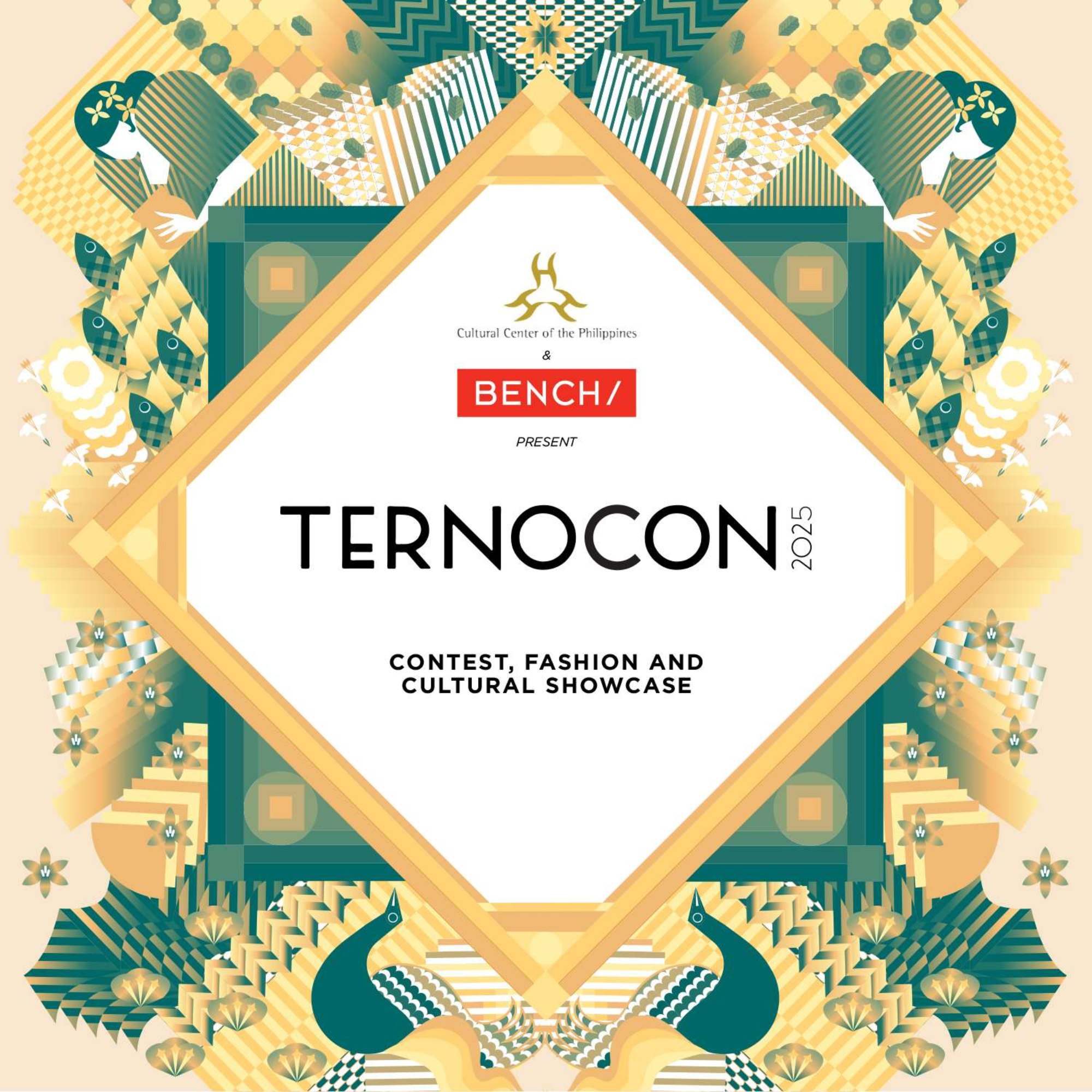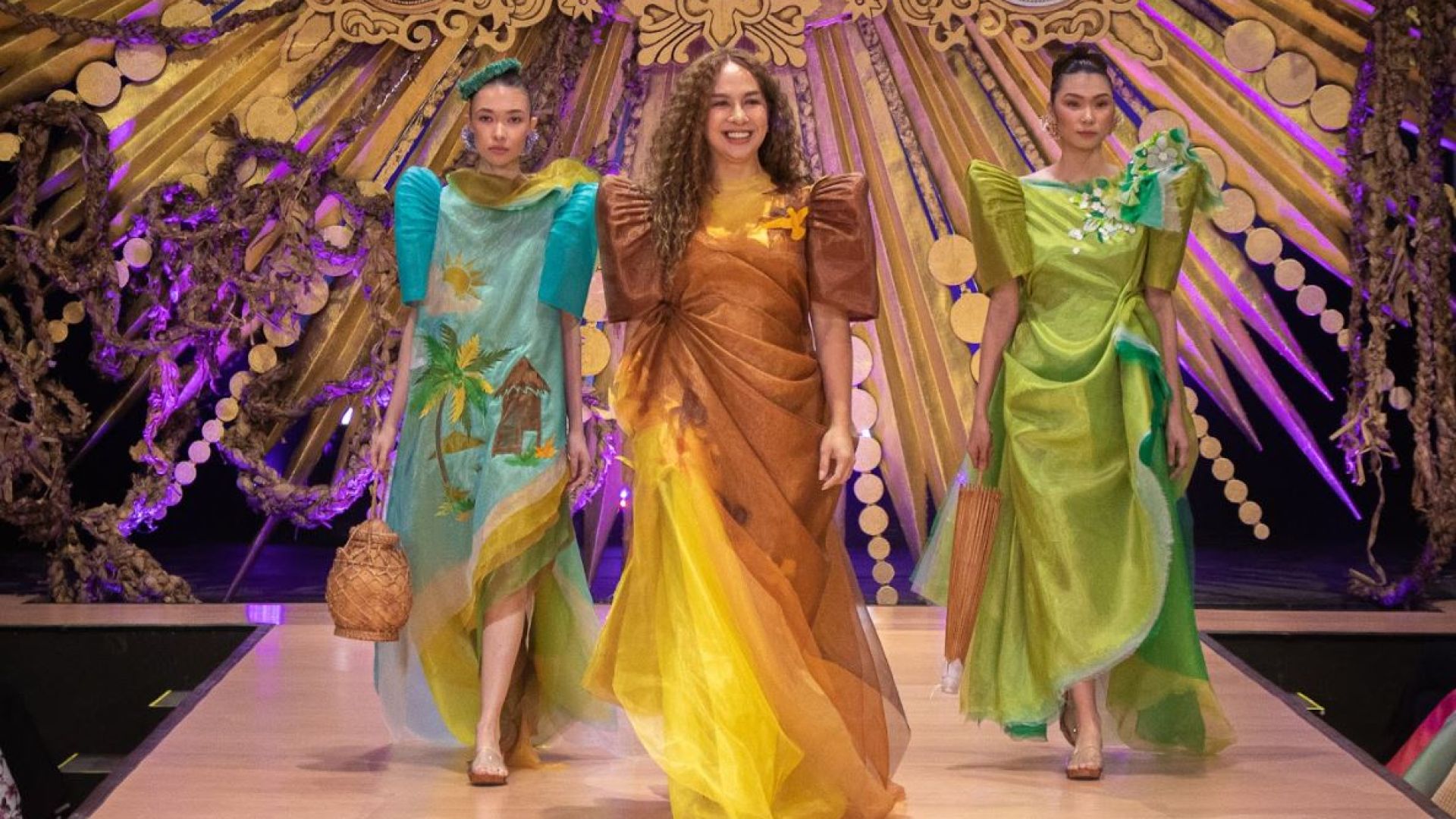 Terno, baro’t saya, Balintawak, and other variations of Philippine national dress will always be part of every Filipino’s life, whether worn during special occasions, school presentations, or as costume in films and theater productions. Known for its butterfly-winged sleeves, the terno should be part of everyone’s OOTD.
Terno, baro’t saya, Balintawak, and other variations of Philippine national dress will always be part of every Filipino’s life, whether worn during special occasions, school presentations, or as costume in films and theater productions. Known for its butterfly-winged sleeves, the terno should be part of everyone’s OOTD.
For the past years, the Cultural Center of the Philippines (CCP) and Bench/ Suyen Corporation have partnered with a common goal to popularize the Philippine dress through the TernoCon, a national convention and competition for Filipino designers. This year, the competition has officially begun with a two-day lecture series via Zoom open to all aspiring Filipino designers who want to join the competition. The lecture featured talks by fashion designers.
Gino Gonzales with multi-disciplinary artist Mark Lewis Lim Higgins and chief curator Ma. Victoria “Boots” Herrera, among others.
THE EVOLUTION OF THE TERNO
Multi-awarded designer, author, and TernoCon founding artistic consultant Gonzales discussed the humble beginnings of the Philippine dress, from being a two-piece garment called baro’t saya.
The Spanish colonialization and global trade shaped the silhouette of the baro’t saya. Usually made with piña or muslin, the camisa or the upper garment became complex over time. Its pagoda-shaped sleeves are delicately hand-embroidered. Meanwhile, the saya or the skirt is floor length, resembling a wide bell. What completes the ensemble is the tapis which is a fabric wrapped around the waist, often with a contrasting fabric pattern.
Eventually, it evolved into traje de mestiza, with inspiration from the European fashion trends in the 17th century. But after Philippine national hero Dr. Jose Rizal published his Noli Me Tangere in 1887, the traje de mestiza was renamed the Maria Clara dress.
In the early 1900s, the blouse began to take shape and move away from the body. Along with the transformation of terno came the confidence of Filipino women of all ages and classes to wear it anytime. By the mid-1900s, it was redefined as a one-piece dress adorned with butterfly sleeves.
Tracing back to the baro’t saya, the terno consists of the blouse or camisa, a folded rectangular piece of fabric draped around the shoulders called pañuelo, and the matching saya or long skirt. A corpiño or a sleeveless undershirt is worn underneath the camisa. To further define the shape of the saya, an enaguas or petticoat can be worn.
The usual butterfly sleeve of a terno has 8-14 pleats to create its iconic bell shape. Its sleeve height is at least 3 inches. Before, the sleeves were made of sheer fabric but they eventually became extensions of the dress using the same fabric and detailing.
For the Balintawak, a variation of the terno with a twist, there are two very important elements. One is the alampay or a kerchief and the tapis, a strip of cloth wrapped around the waist. Normally, these two elements match and are created from the same fabric or pattern. Because Filipinos used to wear the Balintawak in their everyday life, the two elements have practical purposes. The two pieces can be used to wipe sweat and cover the head when it’s hot and cold.
Participating designers of TernoCon are expected to create a three-piece collection, consisting of a formal terno with pañuelo, a formal Balintawak with an alampay and tapis, and a formal Kimona (a camisa with butterfly sleeves) with an alampay and a patadyong (a tube-like wraparound skirt).
Terno, Balintawak, and Kimona offer variety to the colorful history of the Philippine dress.
THE INTERSECTION OF FASHION AND ART
According to Ateneo Art Gallery director-chief curator Herrera, fashion and arts have always been intertwined. In the 20th century, art training in the Philippines began through the University of the Philippines and through what was left of the Academia de Dibujo.
Through the pensionado system, doors opened for Filipino artists residing in the USA. Art was made more accessible, encouraging a relevant shift in art patronage. From illustrados to the growing middle class, tourists and the common Filipino became more interested in art. This also paved the way for genre art.
Filipino artists like National Artist Fernando Amorsolo began painting the everyday life of the Filipino people. With vivid colors, artists captured the lively sceneries and colorful characters of Filipinos living in the provinces. His contemporary, National Artist Guillermo Tolentino, leaned more towards idealism in his sculptures as seen in Oblation and his monument of Andres Bonifacio.
In the 20th century, modernism in the Philippines became evident. It was Victorio Edades who introduced modernism in the Philippines. He studied in Europe and learned new styles. He also identified 13 modernists: Galo B. Ocampo, Carlos V. Francisco, Diosdado M. Lorenzo, Vicente Manansala, H. R. Ocampo, Cesar Legaspi, Jose S. Pardo, Demetrio Diego, Bonifacio Cristobal, Arsenio Capili, Ricarte Puniganan, and Anita Magsaysay.
With the Thirteen Modernists, the Philippine visual arts scenes were redefined, allowing new artists to play with unique styles. After modernism came contemporary art. Materials, methods, concepts, and subjects are combined, challenging the boundaries of art while making sure that the artist is expressing their perspective. With the emergence of contemporary art from the 20th century to the present, visual arts can now intertwine with other art forms like music, literature, theater, and of course, fashion.
Exploring the interesting relationship between fashion and the arts, multi-disciplinary creative Lim-Higgins shared the beautiful story of his mother, National Artist Salvacion Lim “Slim” Higgins, whose first fashion collection featured dresses named after French and Spanish painters such as Degas, Velasquez, and Goya in 1952.
For this year’s edition, TernoCon 2025 will draw inspiration from 20th-century Philippine visual arts. Participants will honor the intricate movements, perspectives, and principles seen in Philippine paintings, architecture, and sculptures. The lecture series was open to all interested designers who hope to participate in this year’s TernoCon and will vie for the Pacita Longos Award (Gold Award).
Maria Margarita Moran Floirendo and Ben Chan were all smiles with TernoCon 2023 winners Gabbie Sarenas, Yssa Inumerable, and Glady Rose Pantua last January 28, 2023.
The competition will culminate in a cultural show, slated on January 25, 2025, where the 12 finalists will present their terno collections. TernoCon 2023-winning designer Yssa Inumerable, along with this season’s reputable mentors, will also showcase their special collections.
TernoCon 3’s Joe Salazar Awardee (Chief Mentor’s Award) AMOR ALBANO layered organza in shades of green for her interpretation of the Balintawak.
Maria Margarita Moran Floirendo and Ben Chan presented the Ramon Valera Award (Bronze) to Zamboanga designer GLADY ROSE PANTUA for her collection of contemporary tapis and trouser patterns.
For her TernoCon 3 collection, Pura Escurdia Awardee (Silver) GABBIE SARENAS played with lines, layers, and fabrics.
Maria Margarita Moran Floirendo and Ben Chan posed alongside Pacita Longos Awardee (Gold) YSSA INUMERABLE, and her creative interpretation of the Philippine dress last TernoCon 2023.
In line with the CCP’s mission of highlighting various art disciplines, TernoCon encourages both expert and young aspiring Filipino designers to innovate the Philippine terno but retain its tradition and history. TernoCon also teaches them to honor the Filipino-ness of it while keeping with the times. After all, the terno is deeply rooted in Philippine history. It is interwoven in the country’s rich clothing artisanship and every Filipino’s identity.
Deadline for submission is until May 10, 2024. For the full mechanics, check out the official CCP social media accounts on Facebook or visit the CCP website (www.culturalcenter.gov.ph). 



